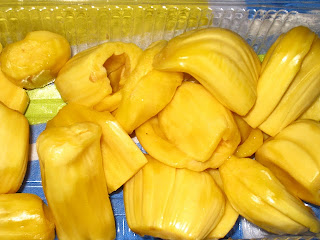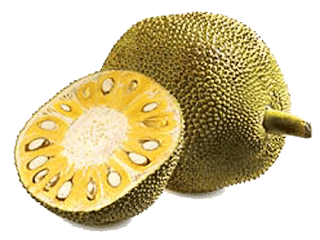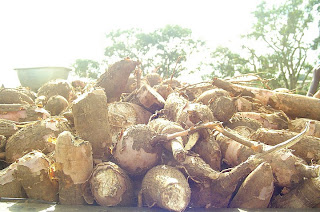The jackfruit, and Jack fruit tree, fruit and Brazilian Jacop
Called Jaca Portuguese, is the fruit of the jackfruit tree (Artocarpus
heterophyllus) from the family of the mulberry family (Moraceae), a
African relative of the breadfruit tree. The name is from theMalayalam
Chakka word Arise. It's a Well Known fruit and is Chosen as the national
fruit of Bangladesh
distinct taste and color. It is very rich in vitamins Such as vitamin A,
vitamin B and vitamin C and minerals Such as potassium, calcium, iron,
proteins and carbohydrates. It is Highly nutritious and contains high
Levels of carbohydrates. Jackfruit very well Substitutes Other primary
foods at times of Scarcity In Some regions.
The fruits grow on the trunk, Are Different in size and of an INITIALLY
yellowish-green to yellow when to ripe yellowish-brown, hard shell
Surrounded with small knobs with conical, hexagonal tubercle. The very
to 100 cm and a diameter of 15 cm to 50 on up to 10 kg and dog weigh
Thos. The collection of fruits Are narrow-elliptical stone fruit
composer, the length of about 3 cm and a diameter of 1.5 to 2 cm Have a.
They mature During The rainy season from July to August. The seeds of the
jackfruit Are bean-shaped oval, up to 3.7 cm in size with yellow skin
around 2.5. The fibrous pulp is sweet and juicy, yellow and light-purple
Divided by columns. The large numbers of Dispersed seeds in it to taste
chestnuts and raw, cooked or eaten dried. The flesh of the fruit
surrounding, edible But a sticky secretion Fibers That is Not with water
But The Skin Can Be Solved with oil.
































